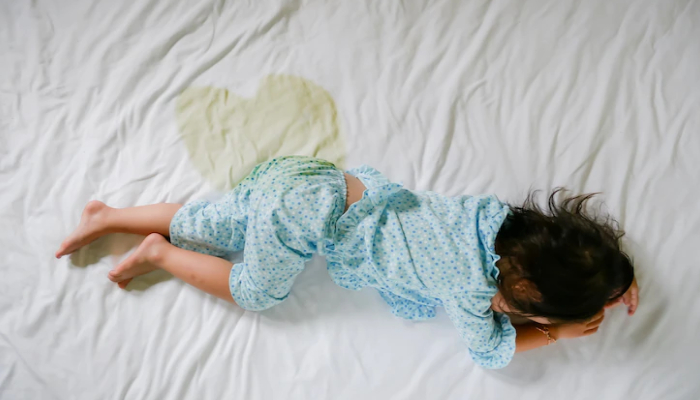Daytime and nighttime wetting are among the more frequent problems that we see in school-aged children. While some children find it hard to toilet train in the first place, others may have leaks and accidents months or years after they have successfully toilet trained. We understand that daytime wetting is stressful for the parent, but it is far more stressful and embarrassing for the child. Children don’t want to wet- it’s just that they can’t stay dry. Unless addressed, daytime and nighttime wetting can have lasting psychological and behavioural impacts on the child.
A child may be wetting for a number of reasons. If your child was born with a condition such as an anorectal malformation, a urologic anomaly or a spinal dysraphism, achieving continence may be a challenge for him or her. Therapy may include surgical procedures that help achieve “social continence”, which means the child can achieve a level of dryness that allows him/her to participate in regular activities with other children at school and outside.
However, the vast majority of children who wet have no anatomic abnormality. It is important to understand that bladder control in a child is different from bladder control in an adult. When children toilet train, their pelvic muscles learn to relax and contract in a coordinated manner. During this phase, children can develop holding behaviours which either prevent them from emptying their bladders completely or prevent them from going before it is too late. Incomplete emptying of the bladder can lead to urinary tract infections (UTIs) that further compound the problem.
Children who have urine leaks are also usually constipated. The pelvic floor nerves and muscles that control urine are closely related to those that control stool. Hence, a child who holds urine also likely holds stool. It is important to pay attention to the posture of the child while passing urine or stool. The child must be seated comfortably on the toilet seat to enable the pelvic floor muscles to relax. It is advisable to use a footstool to support the child’s feet while seated on the toilet so that the torso is relaxed and the hips and knees are parallel to each other. A child-sized toilet seat is also highly recommended to ensure that the child’s pelvis is relaxed. Even little boys may benefit from sitting on the toilet to urinate in the early part of toilet training. When seated on the toilet, the child’s knees must be kept apart. Pants must be pulled down all the way to the ankles. To pass urine, the child must be at the toilet for at least 30 seconds to a minute. It may be necessary to engage the child with a book or a conversation so that he/she sits on the toilet for adequate time. Many Indian households have an Indian-style toilet. A small child will not be able to squat on the pan. These children may develop a habit of passing stool and (in girls) urine in the standing position which can lead to constipation and wetting. In that case, it is advisable to use a “potty” until the child is tall enough to squat on the pan.
Attention to your child’s diet and fluid intake is also necessary. Many school-age children learn to avoid drinking water so as to avoid going to the toilet, especially while at school. This compounds the problem in more ways than one. A decreased fluid intake predisposes to urinary tract infection (UTI) which causes the bladder to become irritable. Poor fluid intake also leads to the formation of hard stool resulting in constipation. The presence of a loaded bowel in the pelvis further makes it difficult for your child to effectively empty his or her bladder with adequate control. Avoidance of all foods that can constipate the child- which includes refined flour in bakery products and high sugar content foods- is necessary.
Your paediatrician and paediatric surgeon will need to have a detailed conversation with you and also run a few tests to decide what the cause of wetting in your child is. Most certainly, they will be looking for evidence of a UTI and an anatomic anomaly that could cause incontinence. They would ask you to observe details of your child’s voiding habits, including how frequently he/she voids, how frequently he/she wets, and whether you can identify anything that might be precipitating accidents. They may also have to perform invasive tests such as a VCUG or a urodynamic study. Further therapy will be determined by their findings. in many cases, simple behavioural changes and timed voiding can relieve children of the problem. Do not restrict your child’s fluid intake unless your doctor asks you to do so.
Night-time wetting usually resolves later than daytime incontinence. Isolated nighttime wetting (nocturnal enuresis) in the absence of daytime wetting can be a manifestation of underlying emotional issues in the child, although it is not always so. Teasing by siblings and peers can worsen the problem. Nocturnal enuresis can be treated with behavioural modification and pharmacologic therapy. Use of bed-wetting alarms, voiding at bedtime and limiting fluid intake two hours before bedtime are some common interventions that have proven useful. Patience while dealing with the child is paramount, but the results of therapy are good.
If your child is wetting, do not hesitate to seek help. Timely intervention by your doctor will not only help resolve the issue but will avert any long-term impact of the incontinence.


